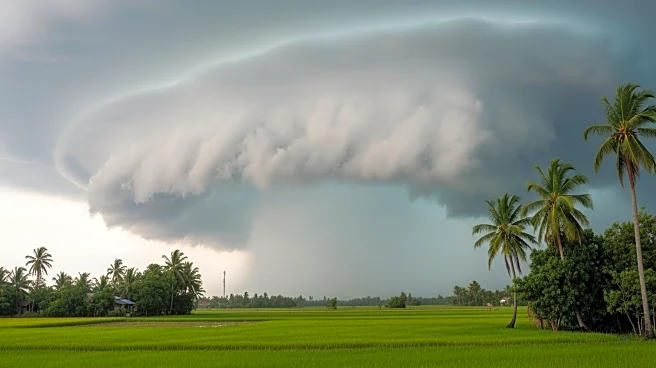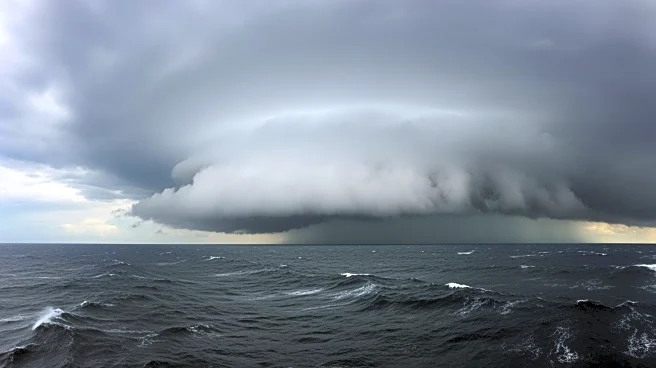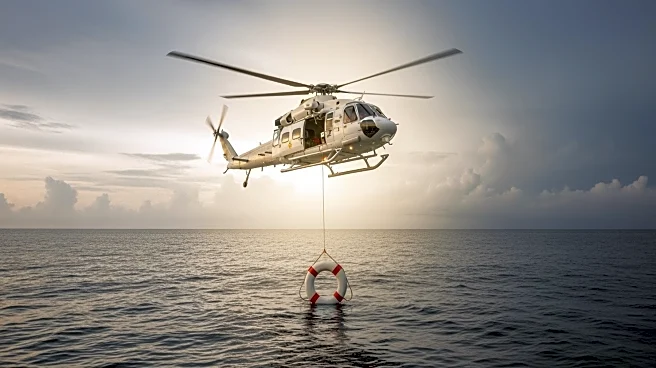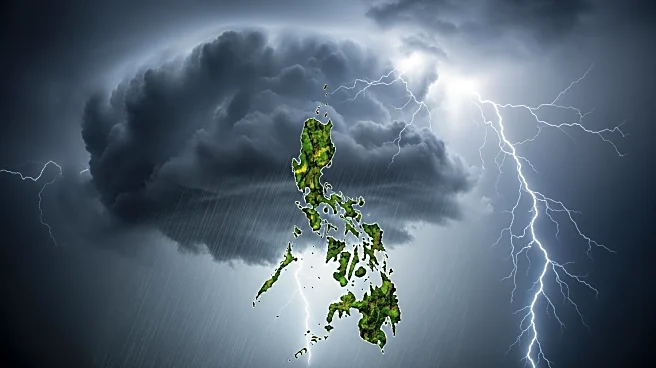What's Happening?
Typhoon Kalmaegi has resulted in significant destruction in Vietnam and the Philippines, with a reported death toll of 188 in the Philippines and five in Vietnam. The storm, which hit Vietnam with winds
reaching up to 149 km/h, has caused widespread damage, including uprooted trees, torn roofs, and shattered windows. Thousands of people have sought shelter in public buildings, and the Vietnamese military has deployed over 260,000 personnel for relief efforts. The typhoon is now moving towards Cambodia and Laos, with authorities warning of potential flooding in low-lying areas.
Why It's Important?
The impact of Typhoon Kalmaegi highlights the vulnerability of Southeast Asian countries to severe weather events, exacerbated by climate change. The destruction in the Philippines and Vietnam underscores the need for improved infrastructure and disaster preparedness in these regions. The storm's aftermath could strain local economies, disrupt livelihoods, and necessitate significant humanitarian aid. The declaration of a state of emergency in the Philippines further emphasizes the gravity of the situation and the urgent need for international support.
What's Next?
As Typhoon Kalmaegi moves towards Cambodia and Laos, these countries are bracing for potential impacts. Vietnam continues to deal with the aftermath, focusing on relief efforts and ensuring the safety of affected residents. The Philippines is preparing for another typhoon building up in the Pacific Ocean, which could further challenge the country's disaster response capabilities. International aid and cooperation may be crucial in addressing the immediate needs and long-term recovery of affected areas.
Beyond the Headlines
The recurring nature of such storms raises questions about the long-term effects of climate change on weather patterns in Southeast Asia. There is a growing need for regional cooperation in climate adaptation strategies and investment in resilient infrastructure. The ethical dimension involves ensuring equitable access to resources and support for the most vulnerable communities affected by these disasters.











